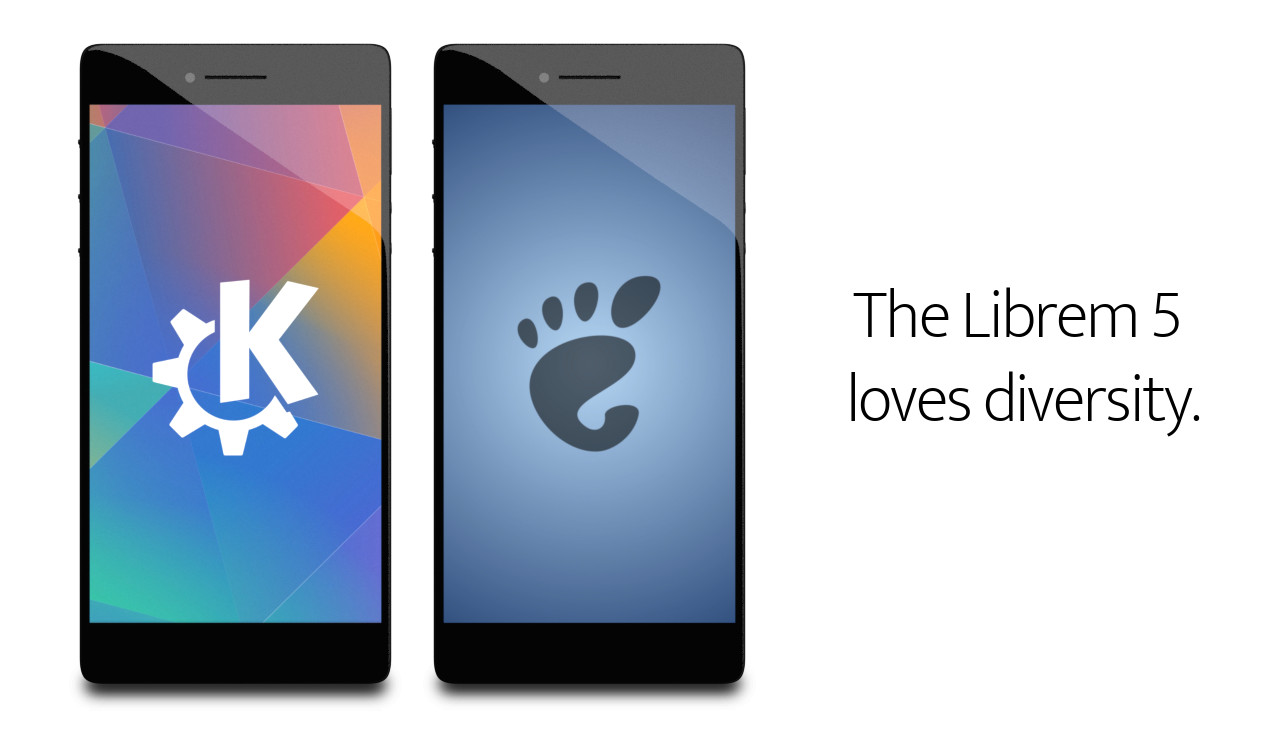GNOME & KDE: The Purism Librem 5 phone is building a shared platform, not walled gardens
Purism
Latest posts by Purism (see all)
- 2025 Year-End Sale - December 16, 2025
- PureOS Crimson Development Report: November 2025 - December 15, 2025
- A Quarter Century After Cyberselfish, Big Tech Proves Borsook Right - December 15, 2025
You might have heard about our Librem 5 phone campaign that we recently launched and that has now crossed the $300,000 milestone. If you are reading this particular blog post, it is quite probably because you are a member of the great GNOME/KDE/freedesktop community, and if you were expecting the Librem 5 to be only “a GNOME phone” and exclusionary of others you will be happy to know that Purism is working with both KDE e.V. and the GNOME Foundation, and will continue to do so.

As a matter of fact, to the question “Will you be running GNOME, Plasma, or your own custom UI?”, our campaign page’s FAQ stated, from the beginning:
“We will be working with both GNOME/GTK and KDE/Plasma communities, and have partnered with the foundations behind them for the middleware layer. PureOS currently is GNOME-based and our great experience with working with GNOME as an upstream as well as GNOME’s OS and design-centric development model; however we will also test, support, and develop with KDE and the KDE community, and of course we will support Qt for application development. We will continue to test GNOME and Plasma, and should have a final direction within a month after funding success. Whatever is chosen, Purism will be working with both communities in an upstream-first fashion.”
As a point of clarification, Purism is supporting GNOME/GTK and will continue to do so; Purism is also supporting KDE/Plasma and will continue; forming partnerships with these great communities is a way to establish our long-term commitment to those goals.
Likewise, Purism will ship PureOS by default on the Librem 5, but will support and work with other GNU/Linux distributions wishing to take advantage of this device.
The Librem 5 is about users reclaiming their rights to freedom, privacy and security on their mobile communication devices (also known as pocket computer, smartphone, etc.) with a platform that they love and trust. It is not about creating walled gardens, erecting barriers and division in the free desktop community, and reigniting the Desktop Wars of the past:

We are planning to empower users to run both GNOME, KDE, or whatever they see fit, on their GNU+Linux phone—just like we can have both GNOME and KDE on the same desktop/laptop today. The fact that we are going to be making an integrated convenient product that may or may not be a vanilla or heavily modified version of one of these two desktops as the “official recommended turnkey product choice for customers” takes away nothing from the value of these environments or from the ability to run and tinker with whatever Free and Open-Source software you see fit on your device—a device that you can truly own.
What we are providing here is a reference platform that is not Android, for both GNOME and KDE communities—we just so happen to need to provide it as a turnkey usable product for less tech-savvy customers as well, while doing it 100% in the open, upstream-first, like a true Free Software project should be. Right now, the exact set of software technologies we will base our “integrated product” on—whether closely based on KDE, or GNOME—is something we are still evaluating and will decide along the way. There is no “us” vs “them” here. The two projects are in different states of advancement when it comes to mobile and touch technologies, and both communities have their specificities, expertise, and strengths. No matter which project we pick as the basis to invest most of our technical resources in, both projects will win:
- Even if one project is not chosen as the reference product user interface, it gains a hardware reference platform that community members can standardize on, and thus improve itself however they see fit.
- This is not the nineties. GNOME and KDE have had a healthy collaboration relationship for the better part of a decade now!
- We light up a competitive fire again in the hearts of contributors in both communities—and beyond. We can now fight for a platform we truly own, from the backend and middleware to the graphical user interface. No more proprietary UIs, no more “fork everything in middleware!”
- We will still provide support to developers and testers across the board, everybody is welcome.
From a higher perspective, we believe this campaign is vital to the relevance of Free Software and the viability of GNU+Linux (vs Android+Linux) beyond the desktop, and to protect ourselves from pervasive surveillance and data capitalism. We hope you will see it in this light as well.
You might also like: GNOME and KDE in PureOS: diversity across devices
Recent Posts
Related Content
- Purism Liberty Phone Exists vs. Delayed T1 Phone
- Introducing the Librem PQC Comms Server
- Introducing the Librem PQC Encryptor
- Abside and Purism Partner to Deliver Secure Mobile Solution for U.S. Government and NATO Countries
- Purism Crosses $100,000.00 in fewer than 48 Hours


